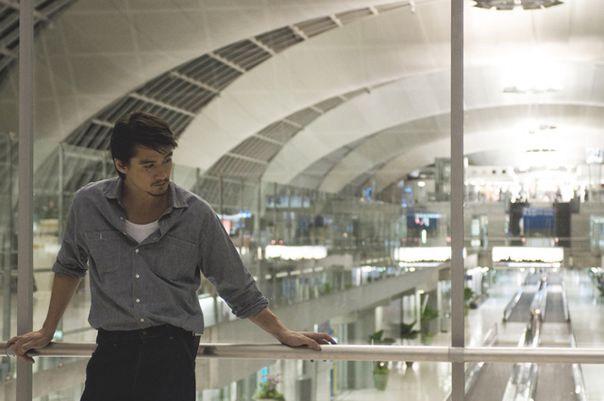The Architect of No Man’s Land
From Berlinale Forum, HI-SO by Aditya Assarat frames the themes of alienation and identity with architectural rigour.

HI-SO
Filmmakers are not only writers or visual artists, they are architects too. Cinematic architecture defines the way a film is constructed, dealing with the calculated symmetries or narrative loose ends, and it can enrich a film greatly. A usual suspect when it comes to cinematic architecture is our beloved Apitchatpong Weerasethakul, but he’s not the only Thai to have a soft spot for unique structures. Thai-American filmmaker Aditya Assarat displays an exceptional understanding of the form in his sophomore feature HI-SO (Thailand), which is featuring the Berlinale Forum and is made of two distinct halves in perfect harmony. The first half introduces Thai superstar Ananda (Ananda Everingham) and his American girlfriend on the set of his latest film and it becomes clear that he’s too foreign for the dreamlike world that surrounds him. But what makes Ananda an interesting character is his too-local identity, which surfaces when a Thai love interest is involved in the second half.
Identity struggle is hardly new territory, but Assarat builds bridges so subtle that this rather dusty story of being in-between turns into a lovely and fresh work of art. He focuses on how Ananda’s divided identity influences his perception of the world around him. Ananda is constantly disconnected, unable to shake off the drowsiness that time imposes on him. One constant throughout the film is the peaceful tone, the kind of slowness that’s born out of alienation. Neither of the girlfriends nor Ananda himself consider their distance from the surrounding culture as a cause for rage; they gracefully accept not being integrated into the world around them. Assarat skilfully links the two halves by using variations of tender and enjoyable scenes, like the one in which Ananda repeatedly asks the girlfriends teasing questions that they never really answer. That tenderness also extends to a loving depiction of the Thai people (working class in particular) and it’s a significant choice for a film that deals with three types of cultural identity. Assarat manages to avoid expressing preference for one identity over the others, keeping his focus on the fragmented nature of the cultural environment.
Assarat’s eye for composition is also reminiscent of an architect’s. The sense of languor is enhanced by the deserted hotel, strangely beautiful rundowns and carefully composed shots that make the characters seem like external figures pasted on a photograph. The film’s visuals also benefit from the unfortunate distinction of the location: We see traces of the tsunami that hit that very coast in 2004, which was a central presence in Assarat’s debut WONDERFUL TOWN (Thailand).
As distinctive young voices become more of a rarity every passing year, the emergence of an architect-director is cause for celebration. With two wonderful films under his belt – both marked by a hypnotic and meaningful serenity – Assarat proves he belongs in that small and distinguished group.


301 Moved Permanently